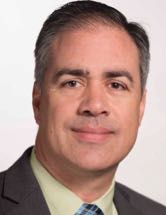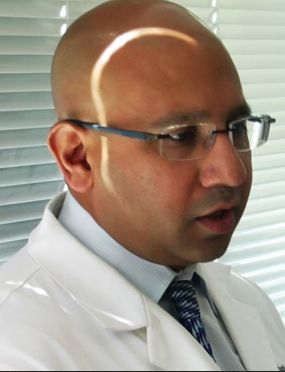Other Track AgendasCirculating DNA, Circulating RNA, Circulating Tumor Cells, Circulating Proteins | Exosomes and Microvesicles: Research, Biomarker Cargo and Therapeutic Potential | RNA-Seq, Digital PCR, and Liquid Biopsies: Capturing Value from Circulating Biomarkers |

Monday, 21 March 201608:00 | Conference Registration, Materials Pick- and Continental Breakfast in the Exhibit Hall | |
Session Title: Opening Plenary Session |
| | |
Plenary Session Chairman: John Palma, Ph.D. |
| | 09:00 |  | Keynote Presentation Clinical Performance of Liquid Biopsy Based Detection of EGFR Mutations in NSCLC
John Palma, Chief Medical Officer, Roche Sequencing Solutions, United States of America
|
| 09:30 |  | Keynote Presentation Microfluidics to Enable the Single Cell Analysis of Circulating Tumor Cells for Personalized Treatment
Chwee Teck Lim, NUS Society Chair Professor, Department of Biomedical Engineering, Institute for Health Innovation & Technology (iHealthtech), Mechanobiology Institute, National University of Singapore, Singapore
Cancer diagnosis and treatment are often hindered by the complexity of tumor heterogeneity. Here, we developed a microfluidic biochip that is able to select any circulating tumor cell(s) of interest for downstream molecular analysis to probe their heterogeneity so as to obtain patient derived information for the personalized treatment of cancer patients. |
| 10:00 |  | Keynote Presentation New Dimensions of Extracellular Vesicles – Cell Biopsies and Therapeutic Vehicles
Xandra Breakefield, Professor, Mass General Hospital (MGH)/Harvard Medical School, United States of America
The contributions of EVs to medicine continues to expand. These vesicles are virtual biopsies of living cells in the body that report on their dynamic physiology through an array of proteins, DNA and RNA. This array is unique to EVs and accessible through biofluids, with profiles informative for different disease states and response to therapy. These vesicles can also be used as stealth vehicles to deliver bioactive agents, including drugs and genes. Their innate stability in vivo, robust loading capacity and ability to achieve efficient delivery to different tissues expands therapeutic modalities.
|
| 10:30 | Coffee Break and Networking in the Exhibit Hall | 11:00 |  | Keynote Presentation Integrated Microfluidic Systems for the Isolation of CTCs, cfDNA and Exosomes
Steve Soper, Foundation Distinguished Professor, Director, Center of BioModular Multi-Scale System for Precision Medicine, The University of Kansas, United States of America
|
| 11:30 |  | Keynote Presentation Will the Liquid Biopsy End FFPE Biopsy Testing to Guide Therapeutic Decisions for Patients with Cancer?
Phil Stephens, Chief Scientific Officer, Foundation Medicine, United States of America
There is tremendous excitement about the potential of “the liquid
biopsy” to identify targeted therapeutic options for patients with
cancer. However, for many tumor types, significant and likely
insurmountable challenges exist that currently exclude the liquid biopsy
as an appropriate diagnostic specimen. This seminar will give a
comprehensive overview of the complexities physician’s face in selecting
the appropriate diagnostic assay to maximize treatment options for
their patients. |
| 12:00 |  | Keynote Presentation New Approaches for CTC Subpopulation Profiling
Shana Kelley, Professor, University of Toronto, Canada
|
| 12:30 | Networking Lunch, Discussions with Exhibitors and View Posters | |
Session Title: Circulating-Free DNA (cfDNA) as a Circulating Biomarker and Contrast with CTCs |
| | 14:00 | Ultra-sensitive Measurement of Circulating Tumor DNA to Track Treatment Response and Failure
Abhijit Patel, Associate Professor, Yale University School of Medicine, United States of America
We have developed an NGS-based method that uses molecular and computational error suppression techniques to enable ultrasensitive detection of ctDNA without prior knowledge of the tumor’s mutation profile. Clinical data will be presented illustrating the utility of this technology for noninvasive monitoring of changes in ctDNA with therapy and with disease progression. | 14:30 |  Technology Spotlight: Technology Spotlight:
Application of Circulating Cell Free Tumor DNA
Theresa Zhang, Vice President, Research Services, Personal Genome Diagnostics
Circulating cell-free tumor DNA (ctDNA) are small DNA fragments shed from tumors and carrying tumor-specific somatic alterations. Recent advances in digital PCR and Next Generation Sequencing technologies have made it feasible to detect and quantify ctDNA reliably, making the non-invasive ctDNA analysis an effective alternative to serial tumor biopsies. In this talk we will discuss applications of ctDNA for clinical uses and for drug development R&D, as well as the future of ctDNA as potential companion diagnostics.
| 15:00 |  Technology Spotlight: Technology Spotlight:
Development of an Automated, Sensitive Microfluidic Device for Capturing and Characterizing CTCs from Whole Blood Samples
Priya Gogoi, Vice President, Strategy and Research, Celsee Diagnostics
Current technologies for isolating and analyzing circulating tumor cells (CTCs) are hindered by sub-optimal sensitivity and specificity of devices or assays as well as lack of the capability to characterize CTCs with clinical biomarkers. We developed and validated a novel technology to capture and characterize CTCs from whole blood samples of patients with metastatic cancers.
| 15:30 | Coffee Break and Networking in the Exhibit Hall | 16:00 |  Technology Spotlight: Technology Spotlight:
Imaging and Analysis of CTCs: Need for Automation
Alan Schwebel, CEO, BioView Ltd
| 16:30 | Liquid Biopsy Using Exosome RNA and ctDNA, Realizing the “Holy Grail” of Personalized Medicine
Johan Skog, Chief Scientific Officer, Exosome Diagnostics Inc, United States of America
The field of liquid biopsy has gained an enormous interest the last couple of years. Being able to detect tumor derived genetic profiles and track the evolution of tumor mutations over time has been a long sought after goal of personalized medicine. Utilizing cell free tumor DNA (ctDNA) for detection of mutations in plasma has shown great promise in clinical studies and has even been included in the label as a companion diagnostic for Iressa in Europe when no tissue is available. However, ctDNA analysis suffer from several shortcomings. The copy numbers of ctDNA carrying the mutations are often very low in plasma, limiting the sensitivity of the assay and can also not be used to monitor splice variants and other RNA specific aberrations that are clinically important. Our exosome platform addresses both of these issues. Mutations are abundantly detected on exosome RNA from plasma, and can also be efficiently used to profile splice variants and fusions. | 17:00 | Circulating Tumor Cells: Isolation and Analysis
Z Fan, Professor, University of Florida, United States of America
In this presentation, we will review the contents covered in a new book being published by Wiley. The book focuses on circulating tumor cells (CTCs), their isolation methods, clinical translation, and commercialization. Different CTC platforms will be compared in the talk. In addition, we will present our results on integrating aptamers, antibodies, nanoparticles with microfluidics for tumor cell isolation, as well as on anticancer treatment monitoring using CTCs. | 18:00 | Networking Cocktail Reception for All Delegates, Speakers, Sponsors and Exhibitors | 19:30 | Close of Day 1 of the Conference. Extracellular Vesicles Dinner Short Course Begins. |
Tuesday, 22 March 201607:30 | Morning Coffee, Breakfast Pastries, and Networking | |
Session Title: Circulating RNA Classes as Potential Biomarkers for Disease |
| | 08:00 | Extracellular RNA Profiles in Central Nervous System Disease
Ashish Yeri, Bioinformatician, The Translational Genomics Research Institute (TGEN), United States of America
The timely diagnosis of neurological disease would help in assessing the risk of developing serious complications permanent brain damage. We are currently investigating the use of extracellular RNA (exRNA) expression in biofluids (plasma, urine and saliva) to serve as biomarkers for a more robust diagnosis of brain injury. ExRNAs, released from all cells in the body are carried within vesicles or bound to RNA-binding proteins in biofluids. Their dynamic expression profile in response to cellular stresses can be coupled with next generation sequencing technologies, allowing for the detection of thousands of RNA at the same time. Here, I present the utility of exRNA biomarkers to diagnose risk for neurological damage such as traumatic brain injuries, subarachnoid hemorrhage, Alzheimer’s, etc. The talk will cover the technologies used in the sequencing of these RNA biomarkers and the analysis methodology for time dependent gene expression data. | 08:30 | Small RNA Biomarkers for Malignant Brain Tumors
Anna Krichevsky, Associate Professor, Brigham and Women’s Hospital and Harvard Medical School, United States of America
The talk will focus on microRNA and other small RNA species released by glioblastoma brain tumors. We will discuss microRNA profiling of cell-free cerebrospinal fluid (CSF) that enables highly sensitive and accurate detection of glioblastoma, discrimination between glioblastoma and metastatic brain tumors, and reflects disease activity. | 09:00 |  | Keynote Presentation Mining for Functional Extracellular RNA Markers of Cardiac Remodeling: The Changing Landscape
Saumya Das, Assistant Professor in Medicine, Beth Israel Deaconess Medical Center and Mass General Hospital, United States of America
Extracellular RNAs (ex-RNAs) have been exploited as biomarkers in many human diseases. We have described the discovery and validation of miRNA-30d as a plasma ex-RNA biomarker that correlates with cardiac remodeling in advanced heart failure, and that appears to play a functional role in cellular processes central to remodeling. In the new era of next-generation sequencing, investigators have attempted to use new discovery and validation platforms to identify novel ex-RNAs as biomarkers in diseases. In this talk, I will described the promise and pitfalls of RNA-sequencing, the challenge of validating RNA-sequencing, and our strategy of prioritizing biomarkers. I will discuss in detail the use of these strategies in the case of post-myocardial infarction remodeling. |
| 09:30 |  | Keynote Presentation OncomiRs as Functional Cancer Biomarkers
Frank Slack, Director, Institute for RNA Medicine, Beth Israel Deaconess Medical Center Cancer Center/Harvard Medical School, United States of America
|
| 10:00 | The Role of Terminal Complement Components in Plasma miRNAs Composition
Ionita Ghiran, Assistant Professor of Medicine, Beth Israel Deaconess Medical Center, United States of America
The complement system is comprised of over 20 soluble and membrane bound proteins with critical roles in recognizing, binding, and removal of foreign particles as well as initiating and regulating innate and acquired immune responses. Activation of the complement system occur during both normal (diurnal) and pathological conditions through any of the classical, alternative, or lectine pathways, that leads to insertion of the membrane attack complex (MAC, C5b-9) pore components in the plasma membrane. The result of MAC-induced exocytosis results in the formation and release in the extracellular space of: a) cytoplasmic components, mostly ions and small molecules, and b) plasma membrane derived vesicles into circulation. This mechanism requires Ca++, calpain activation and local disruption of the actin cytoskeleton. We hypothesized that the size of the C5b-9 complex, about 10 nm, is large enough to allow cellular miRNA species located near the plasma membrane to be released extracellularly.
| 10:30 | Coffee Break and Networking in the Exhibit Hall | 11:00 | Circulating miRNA as a Disease Biomarker
Roopali Gandhi, Assistant Professor in Neurology, Head of MS Biomarkers, Brigham and Women's Hospital/Harvard Medical School, United States of America
A major challenge in MS is to develop immune biomarkers that will allow a better understanding of an individual Multiple Sclerosis patient including response to therapy and disease stage. Stable expression of miRNA in plasma and serum, makes them ideal potential immune biomarker. We found that the expression of miRNAs could be used to differentiate MS patients from control and other neurologic diseases and also to find differences among various clinical groups of MS patients. | 11:30 | microRNA Analysis in Liquid Biopsies
Eveline Emma Vietsch, Research Fellow, Georgetown University, United States of America
Anton Wellstein, Professor, Georgetown University Medical Center, United States of America
Will discuss the background and technical approaches to monitor microRNAs in the circulation. Applications as a potential tool in prognosis of early stage cancers and in treatment responses will be discussed. | 12:00 | Host and Viral Small RNA and microRNA Profiling in Tumor Tissue and Circulation of Patients with Epstein-Barr Virus Driven Nasopharyngeal Carcinoma
Jaap Middeldorp, Professor, Dept. of Pathology, VU University Medical Center Amsterdam, Netherlands
We defined circulating Epstein-Barr virus and host miRNAs in addition to viral DNA load as biomarkers in patients with nasopharyngeal carcinoma and controls and studied the distribution in serum sub-fractions. | 12:30 | Networking Lunch, Discussions with Exhibitors and View Posters | |
Session Title: Novel Technologies and Approaches for the Study of Circulating Biomarker Classes and Value Capture in the Clinic |
| | 13:30 | 3D microdevice for the in vivo Trapping of Circulating Tumor Cells
Hélène Cayron, PhD student, LAAS-CNRS and Innopsys, France
We propose an intravascular fishnet-like 3D microdevice for the in vivo physical trapping of individual or clustered circulating tumor cells. This device should enable early diagnosis of cancer, repeated and systematic enumeration, recovery and analysis of these cells. | 14:00 | Cell-free DNA Promoter Hypermethylation in plasma as a Biomarker for Pancreatic Adenocarcinoma - Preliminary Results
Stine Dam Henriksen, Researcher, Department of Gastrointestinal Surgery, Aalborg University Hospital, Denmark
DNA promoter hypermethylation is known to be a part of early carcinogenesis. Preliminary results suggest alterations in cell-free DNA promoter hypermethylation to have potential of being markers for pancreatic adenocarcinoma. | 14:30 | Hepatocyte Circulating Mitochondrial DNA Drives Non-alcoholic Steatohepatitis by Activation of TLR9
Wajahat Mehal, Associate Professor, Yale University, United States of America
Nonalcoholic steatohepatitis (NASH) is the most common liver disease in industrialized countries. NASH is a progressive disease that can lead to cirrhosis, cancer, and death, and there are currently no approved therapies. The development of NASH in animal models requires intact TLR9, but how the TLR9 pathway is activated in NASH is not clear. Our objectives in this study were to identify NASH-associated ligands for TLR9, establish the cellular requirement for TLR9, and evaluate the role of obesity-induced changes in TLR9 pathway activation. We demonstrated that plasma from mice and patients with NASH contains high levels of mitochondrial DNA (mtDNA) and intact mitochondria and has the ability to activate TLR9. Most of the plasma mtDNA was contained in microparticles (MPs) of hepatocyte origin, and removal of these MPs from plasma resulted in a substantial decrease in TLR9 activation capacity. In mice, NASH development in response to a high-fat diet required TLR9 on lysozyme-expressing cells, and a clinically applicable TLR9 antagonist blocked the development of NASH when given prophylactically and therapeutically. These data demonstrate that activation of the TLR9 pathway provides a link between the key metabolic and inflammatory phenotypes in NASH. | 15:00 | Sample-Free Detection of Blood Biomarkers via Laser-Treated Skin
Mei Wu, Associate Professor, Mass General Hospital (MGH)/Harvard Medical School, United States of America
The circulatory system is the center for coordination and communication of all organs in our body. Monitoring any changes in its analytes and biomarkers could offer sufficient and timely point-of-care diagnosis. We will present how illumination of a tiny area of the skin with hemoglobin-preferably absorbent laser can increase the amount of circulating biomarkers in the upper dermis by more than 1,000-fold. When specific probe-coated microneedle arrays are applied into the laser-treated skin, the plasma biomarkers accumulated in the upper dermis can be reliably, accurately, and sufficiently captured as early as 15-30 min of the assay in a manner independent of a molecular mass of the biomarkers. The novel, minimally invasive approach may allow engineering small wearable devices for measuring multiple biomarkers simultaneously for point-of-care diagnosis. | 15:30 | Coffee Break and Networking in the Exhibit Hall and Poster Viewing | 16:00 | The Use of Circulating Protein Biomarkers to Identify Mechanisms of Resistance and Restore Sensitivity: The Example of the Bispecific Antibody MM-141 (Istiratumab)
Jason Baum, Director, Companion Diagnostics, Merrimack Pharmaceuticals, United States of America
Understanding why certain patients are insensitive to standard therapies represents a key unmet medical need. By identifying markers of chemo-resistance, we can then look to restore sensitivity using targeted therapies. MM-141 (istiratumab), an investigational bispecific antibody, co-targets IGF-1R and ErbB3; the co-development of a diagnostic test to detect a circulating protein biomarker will be discussed. | 16:30 | Sortilin as a Circulating Biomarker for Cardiovascular Calcification
Elena Aikawa, Associate Professor of Medicine, Brigham and Women’s Hospital, Harvard Medical School, United States of America
Cardiovascular calcification, a growing burden in Westernized countries, is not only a risk factor for cardiovascular events, but may itself contribute to cardiovascular risk. Research into treatment of cardiovascular calcification is lacking, as shown by clinical trials that have failed to demonstrate the reduction of calcific aortic stenosis. Hence the need to elucidate the pathways that contribute to cardiovascular calcification and to develop new therapeutic strategies to prevent or reverse calcification has driven our research investigations. This presentation will discuss studies investigating the novel mechanisms of sortilin in cardiovascular calcification, focusing in particular on its role as a biomarker for abdominal aortic calcification. | 17:00 | Single cell Functional Phenotyping and Phenotypic Drug Profiling in Droplet Microfluidics for Better Targeting of Drug-Resistant Tumors
Tali Konry, Associate Professor, Northeastern University, United States of America
| 18:00 | Close of Day 2 of the Conference |
|

 Add to Calendar ▼2016-03-21 00:00:002016-03-22 00:00:00Europe/LondonCirculating DNA, Circulating RNA, Circulating Tumor Cells, Circulating ProteinsSELECTBIOenquiries@selectbiosciences.com
Add to Calendar ▼2016-03-21 00:00:002016-03-22 00:00:00Europe/LondonCirculating DNA, Circulating RNA, Circulating Tumor Cells, Circulating ProteinsSELECTBIOenquiries@selectbiosciences.com